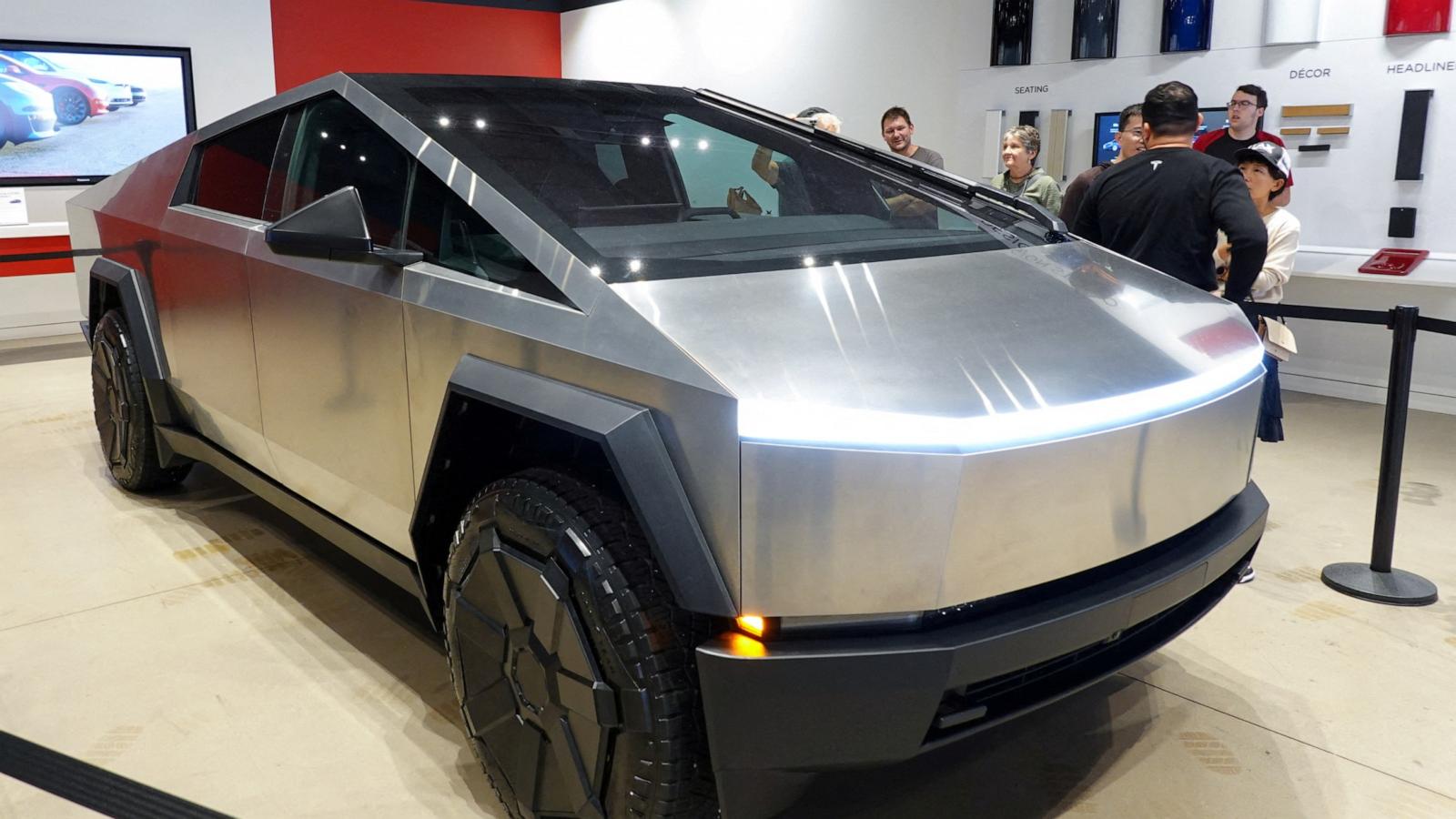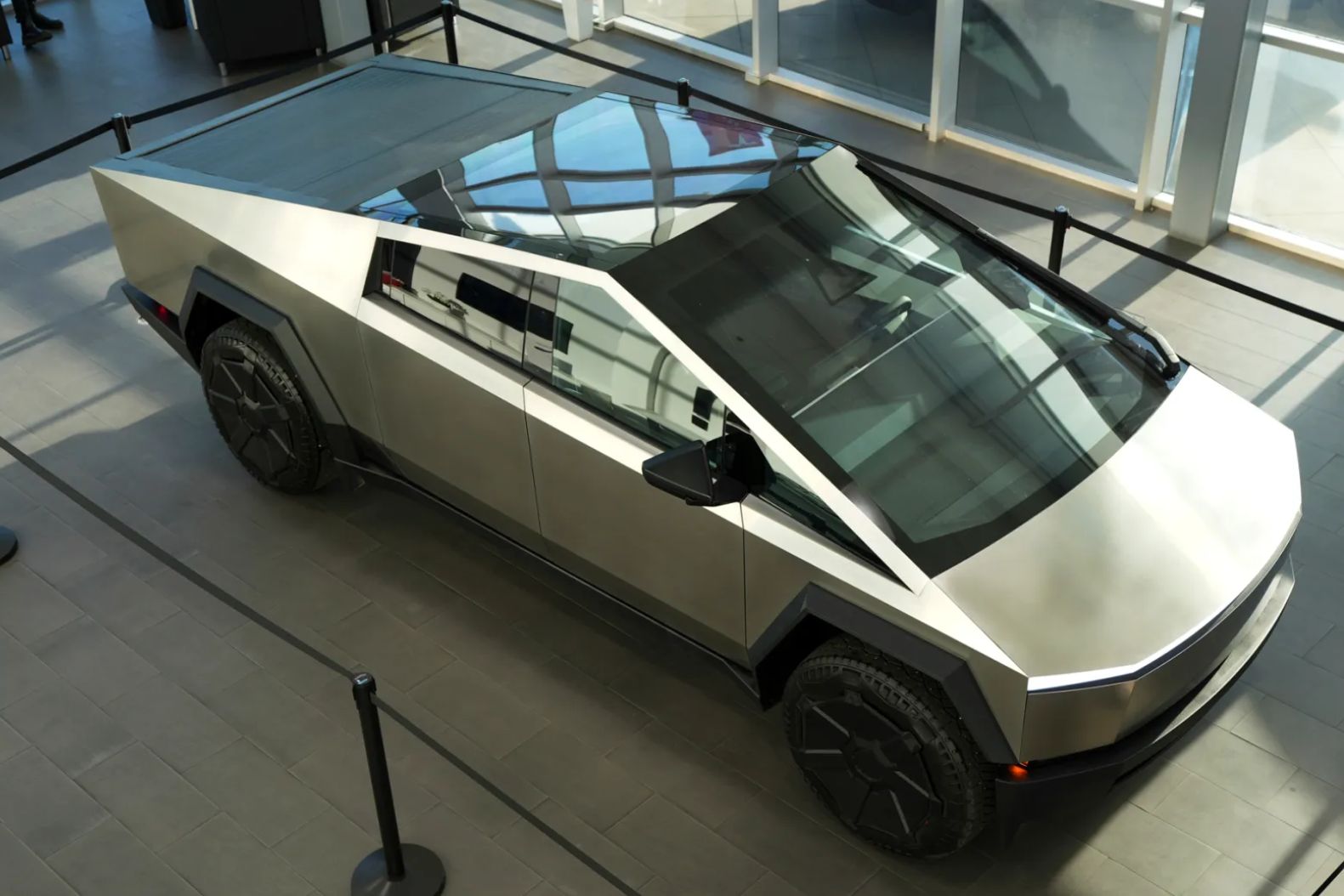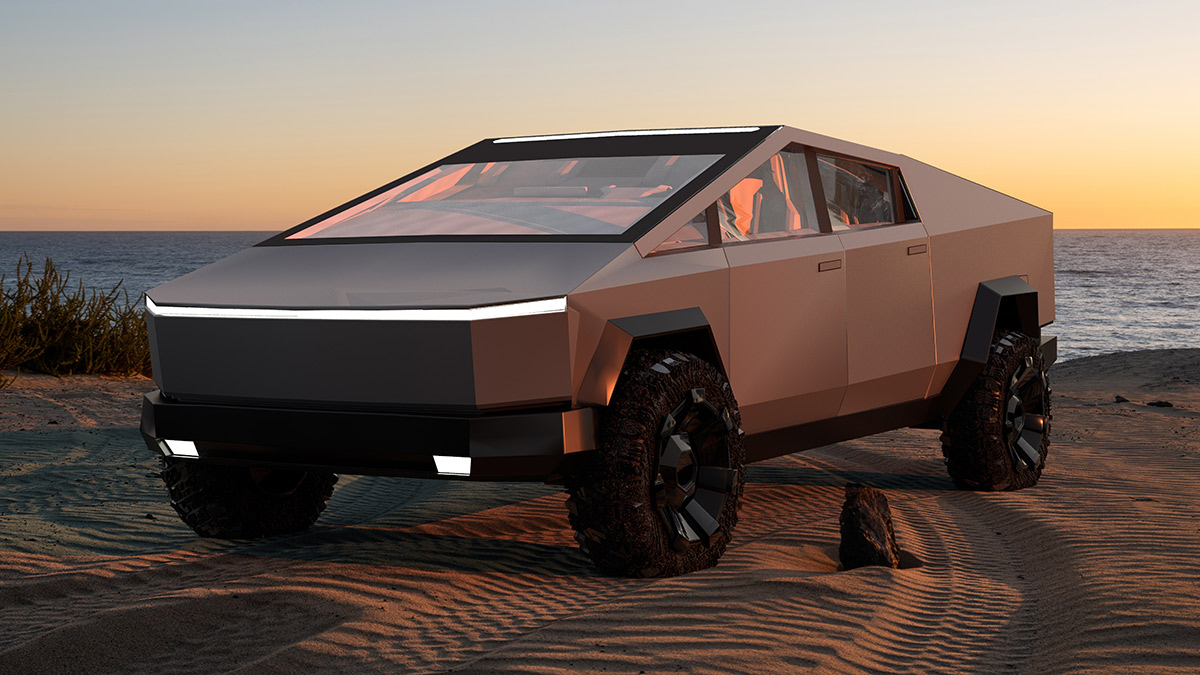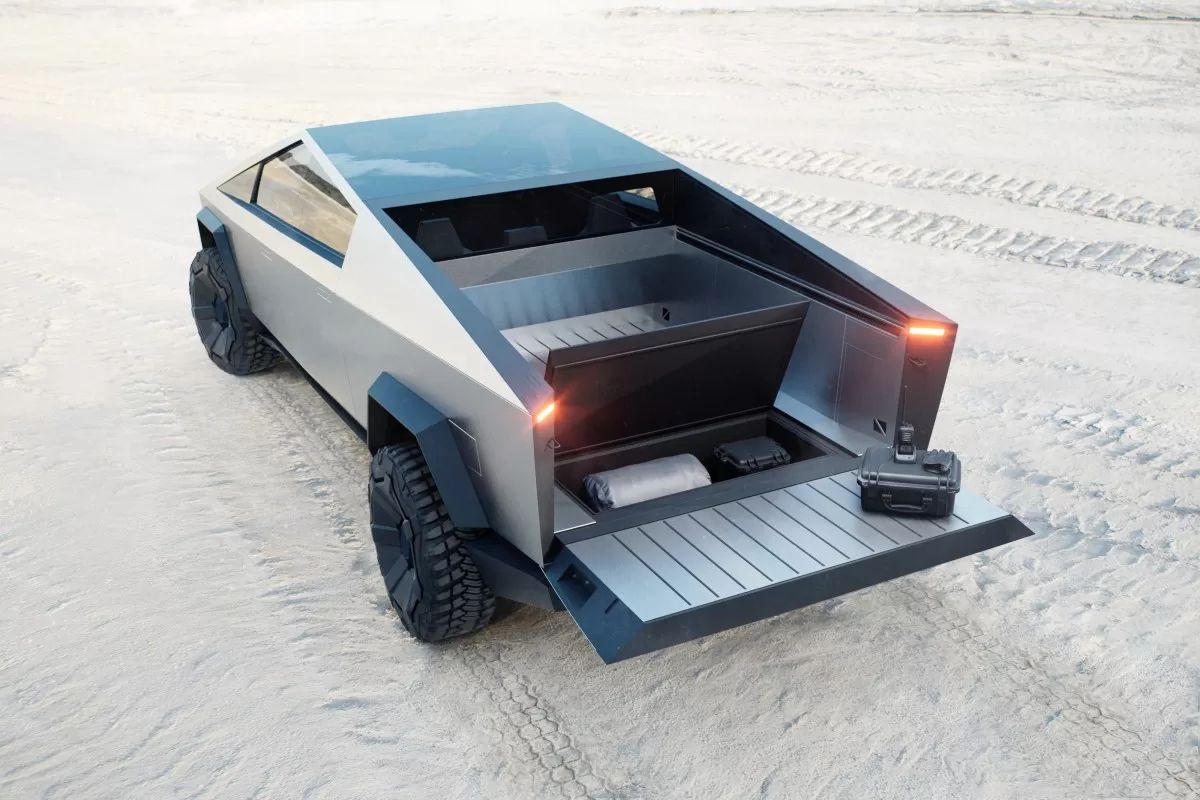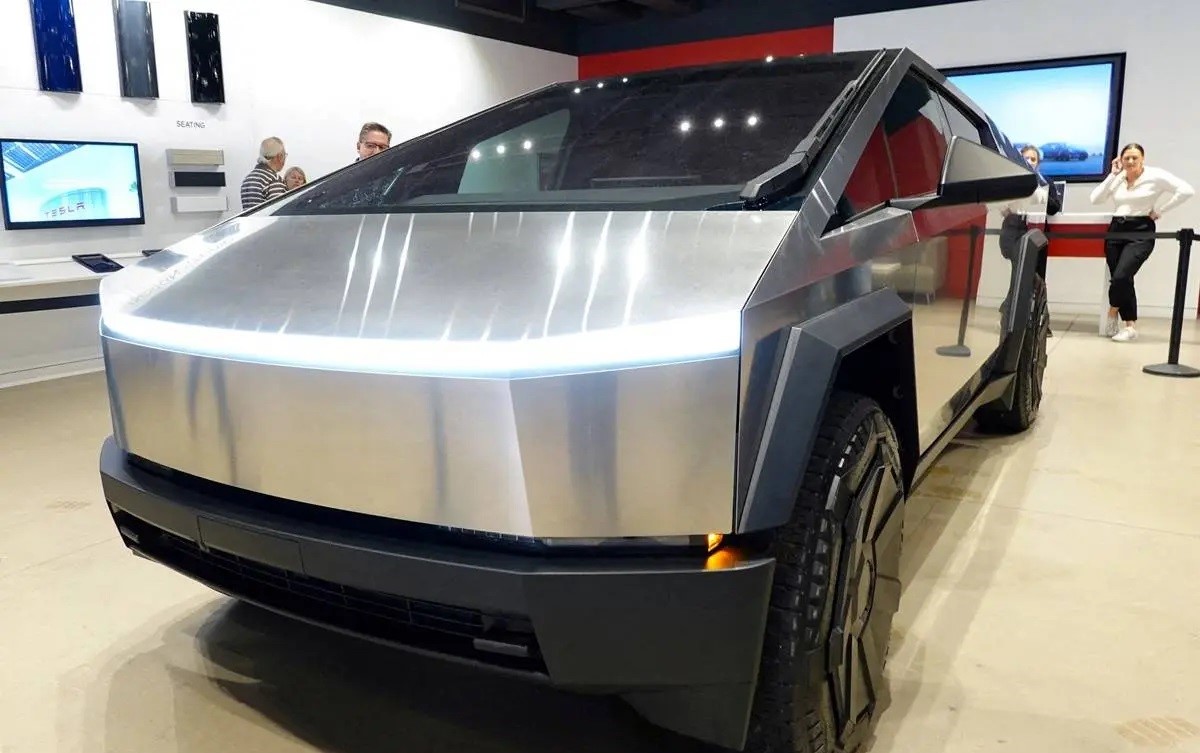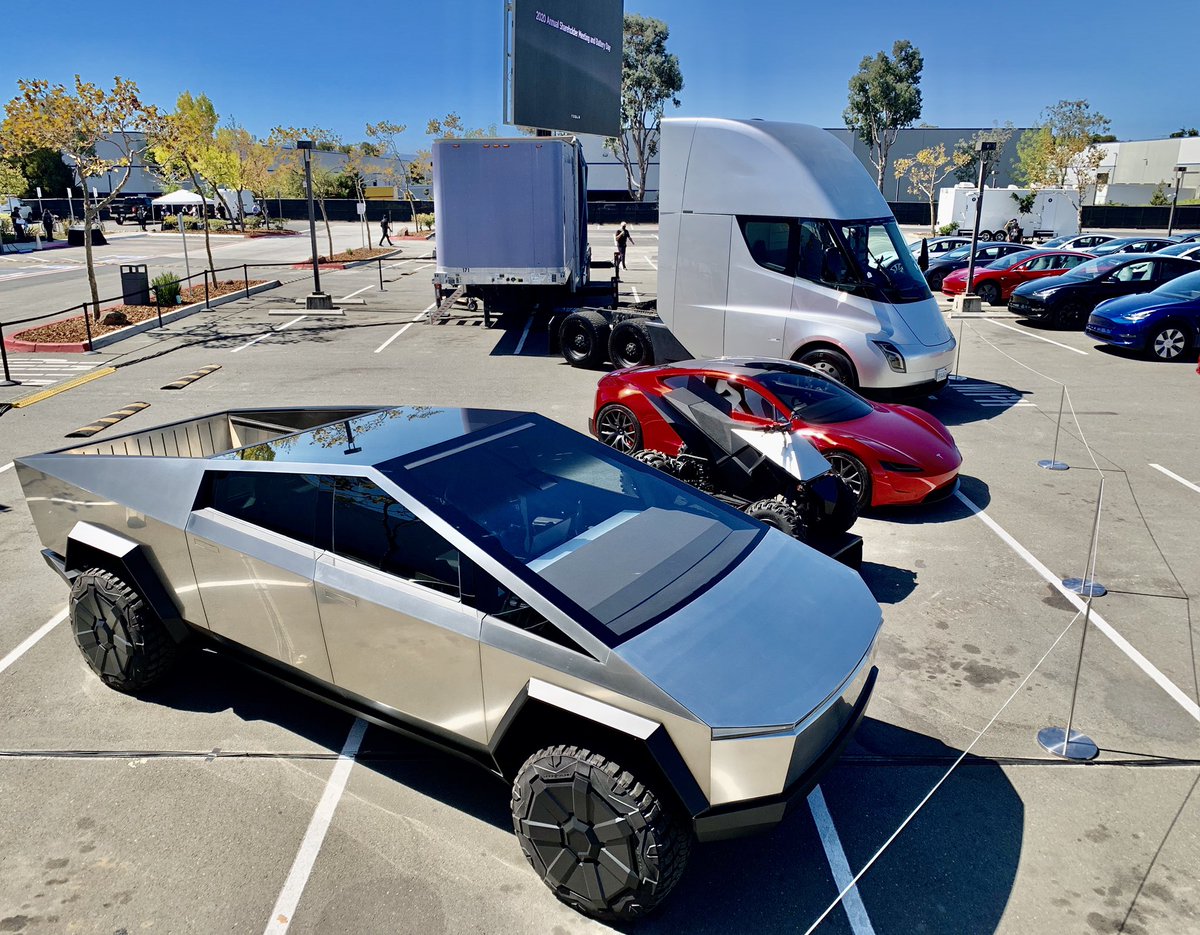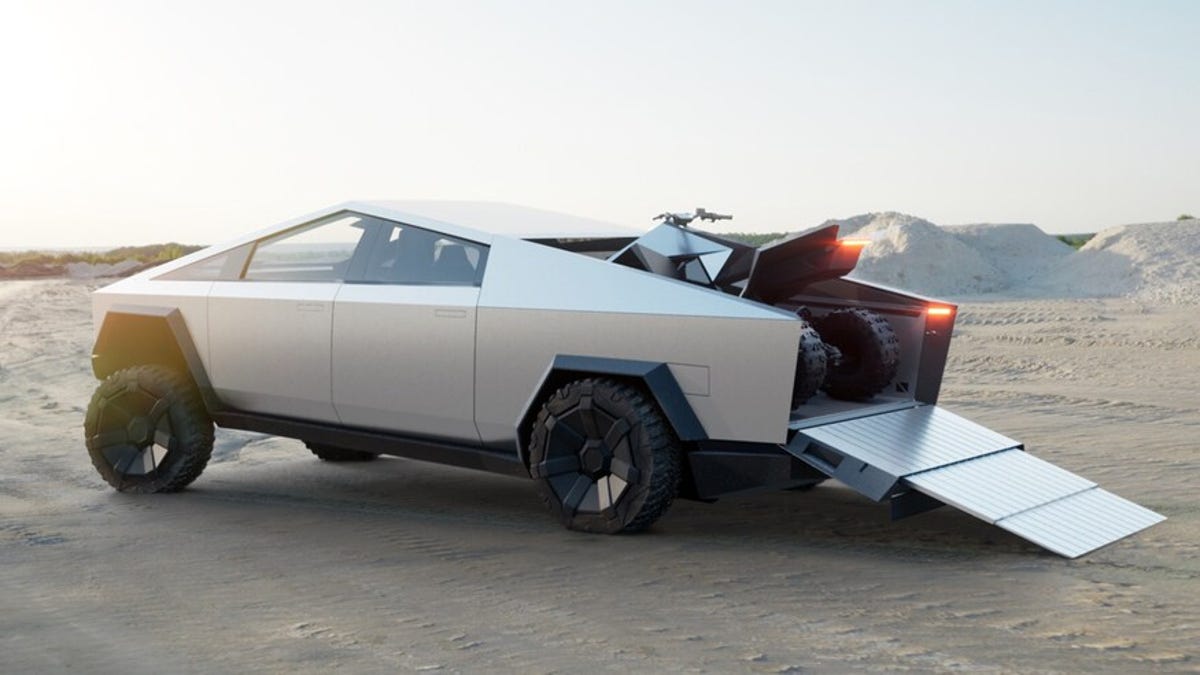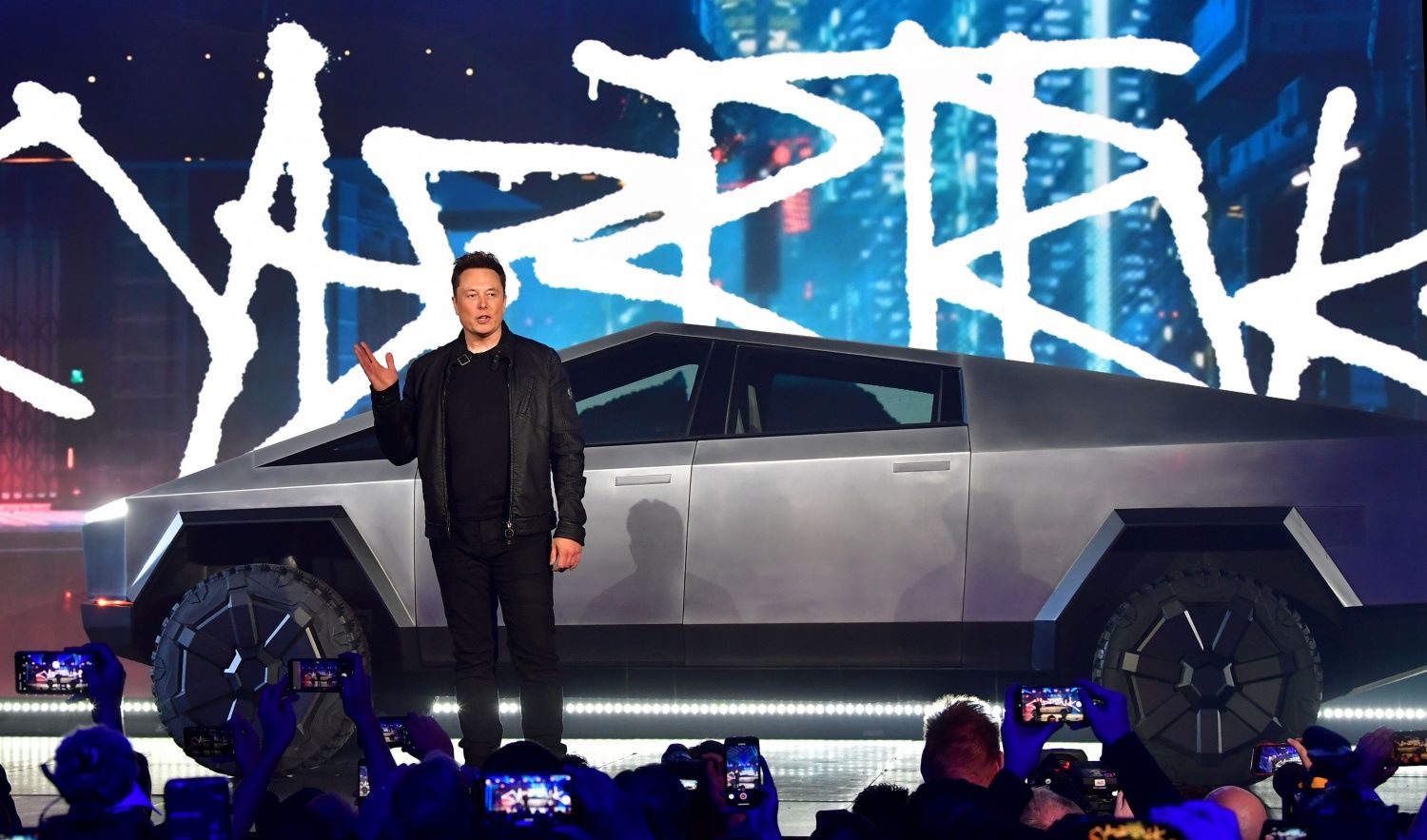A new image of a Cybertruck-inspired Tesla robotaxi concept has been revealed in the recently launched biography of Elon Musk by Walter Isaacson. The image showcases a two-door, two-seater compact vehicle with a wedge-shaped design and a fingerprint-inducing stainless steel finish. While it remains uncertain whether this concept will be built, it confirms that Tesla’s engineers drew inspiration from the Cybertruck’s distinctive angular edges.
Key Takeaway
The new Elon Musk biography unveils a Cybertruck-inspired Tesla robotaxi concept, highlighting the influence of the Cybertruck’s design on the compact vehicle.
Influences and Design Details
In addition to the image of the robotaxi concept, the biography also features a photograph of Franz von Holzhausen, Tesla’s chief designer, standing beside an early robotaxi prototype. The prototype, depicted as a cardboard cutout, reveals a two-seater configuration with extra space behind the seats for luggage. Although the exact timeline of this design is unclear, it falls within the period of 2014-2016, which discusses Autopilot, Tesla’s advanced driver assistance system.
Leaked Photos Generate Hype
Prior to the biography’s official launch, images of the robotaxi concept began circulating on social media site X (formerly known as Twitter). Walter Isaacson has been teasing excerpts and information from the biography for several weeks to create anticipation for the book. One reveal includes Tesla’s plan to manufacture its next-generation electric vehicles, including a $25,000 car and a robotaxi, in Texas instead of Gigafactory Mexico. Both vehicles will feature a futuristic design reminiscent of the Cybertruck, making them stand out as glimpses of the future.
Autonomy and Future Plans
According to the information provided in the biography, the robotaxi will be a fully autonomous vehicle specifically designed for ride-hailing services. Despite objections from engineers concerning safety, Elon Musk insisted on a design without pedals or a steering wheel. This decision reflects Musk’s strong belief in Tesla’s Full Self-Driving (FSD) software, despite it not yet being fully capable of enabling complete autonomy. Currently, FSD relies solely on cameras and Tesla’s Dojo supercomputer.
It is worth noting that current federal safety standards prohibit mass production of vehicles without steering wheels or pedals. However, the National Highway Traffic Safety Administration is expected to announce rule changes on this matter in September. In contrast to other purpose-built autonomous vehicles that can accommodate four to six passengers, Tesla’s robotaxi concept appears to seat only two individuals. This unique design choice may limit its mass-market appeal.
Potential Launch and Challenges
Musk has previously announced plans to launch a dedicated robotaxi without a steering wheel or pedals by 2024. Achieving this goal would require developing, testing, verifying, and producing the vehicle at scale within two years. While Tesla has a permit to test driverless vehicles with a driver in California, the company may opt to deploy its robotaxi service in Texas due to more lenient regulations. Musk has previously described the service as an “Airbnb for cars,” allowing owners to dispatch their vehicles to provide rides and potentially earn extra income.
Tesla’s Full Self-Driving software (FSD) has faced criticism for various issues, including false advertising and promoting capabilities that are not yet fully realized. Musk recently demonstrated the software in a live video, during which he had to intervene to prevent the vehicle from crossing an intersection on a red light. It remains to be seen how Tesla plans to bring its robotaxi service to market, but the unveiling of this concept in the biography offers a glimpse into the ambitious future of autonomous vehicles.









